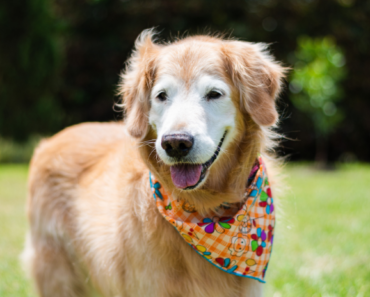Reactive behaviors in dogs range from overexuberant playfulness to excessive fear and aggression. While medications are often prescribed to calm reactive dogs, a combination of training and supplements offers a better solution.
Reactivity is a serious issue that impacts many dogs. While many dog parents and veterinarians turn to prescription medications as a first step, there are better options for managing reactive dogs, including positive training, calming supplements, and mental stimulation through games and puzzles.
UNDERSTANDING REACTIVITY
Reactivity encompasses a variety of behaviors (reactions) that a dog may display in response to triggering stimuli. These stimuli often include other dogs, people, and cars. Some reactive dogs may display overly playful behavior — jumping, barking, or pulling hard on the leash to get to the stimuli. Because these behaviors aren’t perceived as threatening, they aren’t as frequently addressed as the other form of reactivity, which often presents as behaviors we deem aggressive.
Dogs with fear-based reactivity may snarl, bark, or appear to completely lose their minds as they thrash and writhe on their leashes. While this behavior is understandably scary, it’s often rooted in a deep fear — these dogs are typically trying to ward off the person or thing they find scary, not necessarily attack it.
CONSULT A POSITIVE TRAINER
Ideally, your first step in addressing reactivity should be to consult a professional trainer. Reactivity won’t be helped by punishing the dog or reprimanding him for unwanted behaviors, so be sure the trainer only uses positive, reward-based training, and follows fear-free principles. While not all reactive dogs require long-term training, getting an evaluation from a trainer can help set you up for success. Professional trainers who work with reactive dogs will be able to give you a better grasp of what type of reactivity your dog has; his thresholds with reactivity; and how to help him in the most effective way.
AT-HOME DESENSITIZATION TRAINING
For new dog parents, or those inexperienced with reactivity, it may be best to start desensitization training under the guidance of a trainer. However, it’s also very possible to improve your dog’s reactivity with the following process you can do at home.
Tip: The goal is to use rewards to have your dog witness a trigger and not react.
Desensitization training occurs in coordination with your dog’s comfort level, and his level of reactivity. After practicing the process repeatedly, your dog should gradually be able to get closer to, and increase his threshold for, the trigger. For example, if your dog is scared of men wearing baseball caps, you would not try to desensitize him while standing directly in front of a man matching this description. However, if you see a man with a baseball cap at a distance of 30 feet, and your dog appears to take notice but does not display signs of fear or aggression, this would be the appropriate distance to begin training.
Reward your dog with a treat every time he sees a man with a baseball cap but doesn’t react. This way, he’ll learn to associate the trigger with something positive. Over time, you should be able to reduce the distance between your dog and men with baseball caps without triggering reactivity. You can use this process with anything your dog fears.
NATURAL REMEDIES FOR REACTIVITY IN DOGS
A variety of supplements and remedies can help calm reactive dogs. Not all work with all dogs, so you may have to try different ones, under the guidance of your vet.
Bach Rescue Remedy is one of the most well-known and widely used supplements for animals. It’s formulated to soothe them during stressful events. A few drops can be added to your dog’s water or rubbed into his ears or paw pads. You may wish to use this remedy before taking your dog into situations where he might see potential triggers for reactivity.
L-theanine is a commonly available and low risk natural supplement known for quick absorption into your dog’s bloodstream. It’s available in a variety of forms, and is even included in some natural treats or chews. I recommend it either in anticipation of a stressful event, or as soon as possible after a dog reacts negatively to a stimulus.
Tip: Be sure to work with your veterinarian before giving your dog any new supplement.
Probiotics are good for more than the gut. In fact, they have many verifiable health benefits, and can even influence mood and behavior. Some reactive dogs seem to find relief with probiotic supplements. One study showed that probiotics reduced anxious behaviors such as excessive vocalization, jumping, pacing, and spinning; these behaviors are common with reactivity, so it’s possible that regular probiotic supplements could reduce your dog’s unwanted behaviors.
Mental Stimulation Decreases Reactive Behavior
Puzzles and games can help engage your dog’s mind and reduce anxiety based on a lack of stimulation. Simple toys, such as the classic Kong stuffed with treats or peanut butter, work well for some dogs. If you have a particularly curious dog, which includes many herding and working breeds, you may want to try a more challenging toy such as a dog puzzle. My own dog benefited greatly from doing nosework. It gave her an opportunity to feel successful at a “job”, while also practicing her listening and response skills with me.
Tip: Be sure to buy a THC-free product formulated specifically for dogs.
CBD for Decreasing Reactivity
CBD supplements have been shown to assist dogs with a variety of behavioral problems, and can be used for reactivity in conjunction with training and other management methods. CBD supplements can decrease anxiety-induced reactivity, giving your dog a higher reactivity threshold and making the training process easier. Plus, the relief from the stress induced by reactivity can improve your dog’s quality of life.
While it’s important to note that not every supplement works for every dog, CBD is a great place to start when using natural solutions for your dog’s reactivity.
You may find CBD most successful when given daily, or use it only before taking your dog someplace where he might encounter triggers. For example, if he’s reactive to other dogs, give him the supplement prior to walking along a road where you might encounter people walking their own dogs.
A reactive dog can live a happy life doing “normal dog” things, but you have to be on board with addressing the problem. Reactive dogs approached with a “live and let live” attitude rarely show improvement, and are likely to get worse in their responses. This means that even if your dog’s issue is mild, it’s important to address it as soon as you notice reactive behaviors.



























